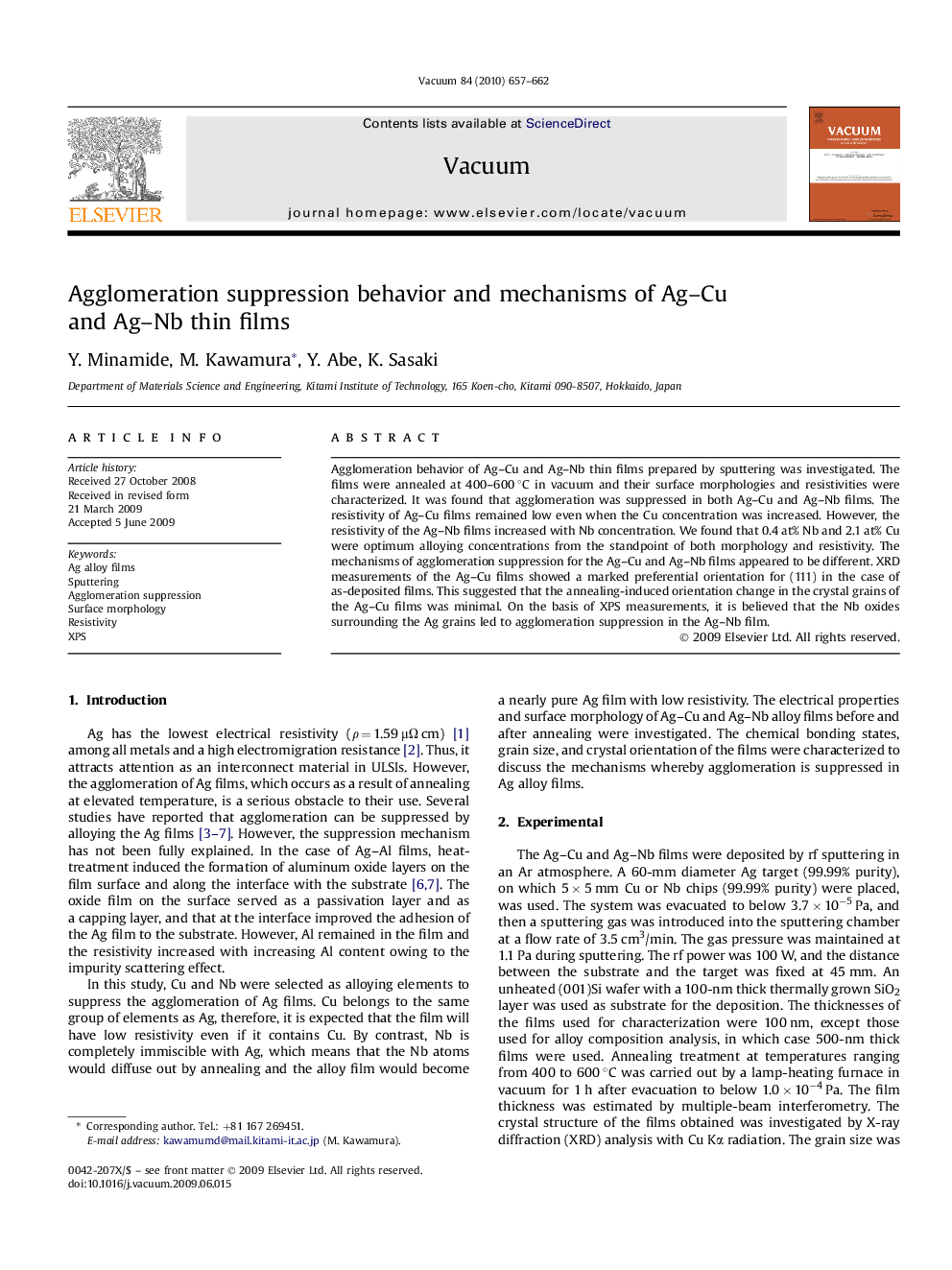| Article ID | Journal | Published Year | Pages | File Type |
|---|---|---|---|---|
| 1691051 | Vacuum | 2009 | 6 Pages |
Agglomeration behavior of Ag–Cu and Ag–Nb thin films prepared by sputtering was investigated. The films were annealed at 400–600 °C in vacuum and their surface morphologies and resistivities were characterized. It was found that agglomeration was suppressed in both Ag–Cu and Ag–Nb films. The resistivity of Ag–Cu films remained low even when the Cu concentration was increased. However, the resistivity of the Ag–Nb films increased with Nb concentration. We found that 0.4 at% Nb and 2.1 at% Cu were optimum alloying concentrations from the standpoint of both morphology and resistivity. The mechanisms of agglomeration suppression for the Ag–Cu and Ag–Nb films appeared to be different. XRD measurements of the Ag–Cu films showed a marked preferential orientation for (111) in the case of as-deposited films. This suggested that the annealing-induced orientation change in the crystal grains of the Ag–Cu films was minimal. On the basis of XPS measurements, it is believed that the Nb oxides surrounding the Ag grains led to agglomeration suppression in the Ag–Nb film.
